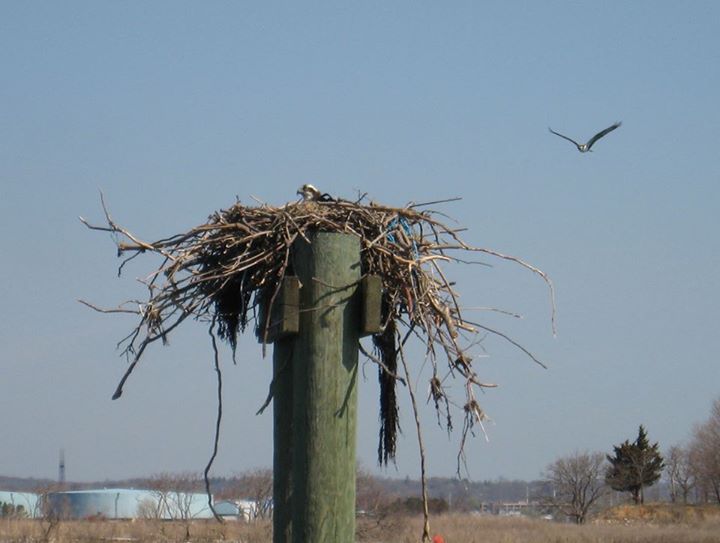

The local Osprey story is one of a magnificent comeback for these majestic birds which were on the endangered species list not too long ago. We need to go back in time to over 15 years ago when there was only two nests in the area, one at the Sherwood Mill Pond in Westport and a second nest was built on power lines at the Manresa Island power-plant in Norwalk. The utility installed a nesting pole nearby and moved the nest off the lines that fall and the new spot was adopted by the pair of Osprey the following spring. A friend of mine who worked at the Westport Nature Center (now called “Earthplace”) monitored the nest in Westport, while I would kayak over to watch the nest on the west side of Manresa Island near Village Creek. This was before a video camera was put in place overlooking the nest at the power-plant and before Osprey seen flying overhead became a common sight.
The population has grown tremendously since then with at least 24 nests within the same geographic area that I last counted during the spring of 2013 (Long Neck Point, Darien, in the west, to Sherwood Point, Westport, in the east). Larry Flynn, who leads the Norwalk Seaport Association (NSA) bird watching tours around the Norwalk Islands has helped with the count in recent years. With the proliferation of nests in the area, including a few nests that were built but abandoned and more nests found inland away from the shore and islands, I stopped counting the active nests. Hopefully there is enough fish in our local waters to support all the Osprey (fish hawks) nesting so close to one another. And, the city of Norwalk can now boast a pair of Bald Eagles who have taken over an existing Osprey nest on Chimon Island, a wildlife refuge that is closed to the public during the nesting season.
Scientists have attributed the decline of the Osprey population to the pesticide DDT, which was banned in the United States in the early 1970's. The chemical found its' way into the food chain resulting in very thin eggs shells which failed to hatch and were easily crushed when an Osprey sat on them.
Today, Osprey are spotted as they arrive in the area beginning in late March from their migration back up from South America. They begin building or rebuilding their nests and start mating right away. They migrate back south in the early fall.
Osprey can be seen circling overhead or perched in trees along the shore and around the islands looking for fish to dive after in the shallow waters. They can also be seen carrying small sticks overhead as they are constantly re-building their nests throughout the spring and summer and you may spot one carrying a fish back to its' nest.
Osprey are protected under the US Migratory Bird Treaty Act of 1918, which prohibits disturbing their nests in any way during the nesting season. The US Coast Guard removes nests built on fixed channel markers each fall after the Osprey have left the area, but the hard working Osprey will rebuild those nests the following spring as well as nests that may have been removed by property owners. The Osprey will often squabble over the nesting spots when they return in the spring.
Kayaking is one of the best and least intrusive ways to spot the local Osprey along the coast and around the islands, but you can also join the NSA for their bird watching tours aboard their ferry, the CJ Toth. Three tours have been scheduled in June and July and tickets can be purchased online at www.seaport.org or (http://www.brownpapertickets.com/event/1447115 ).